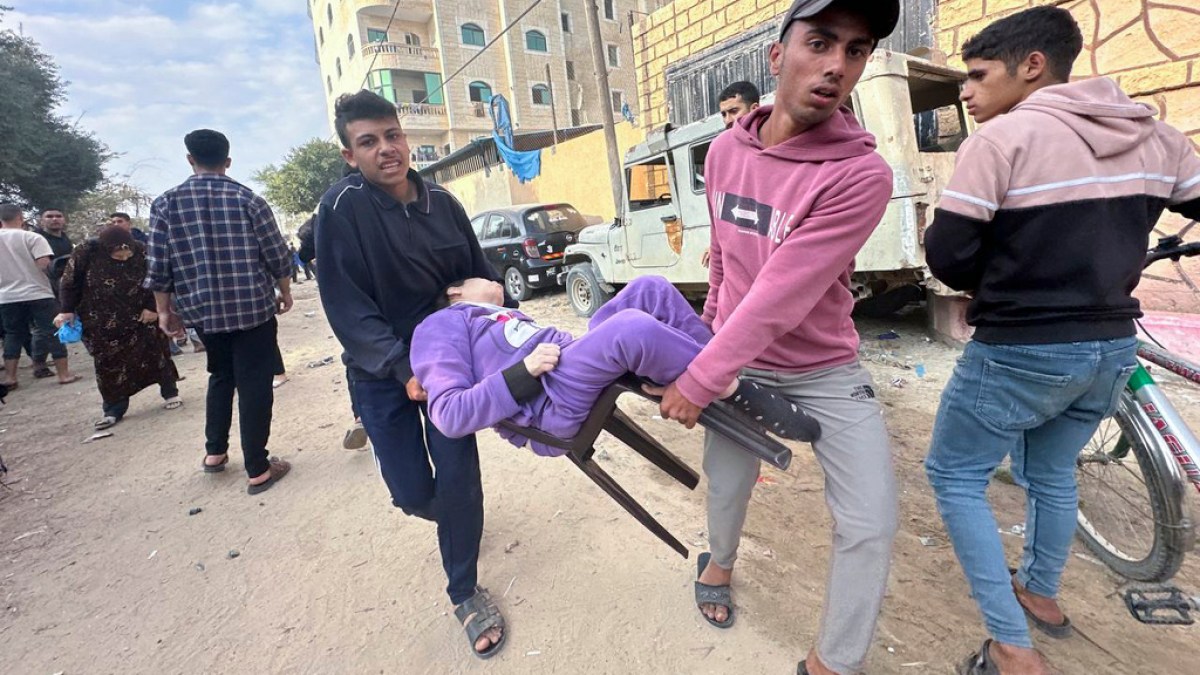Israeli forces attack cities, towns and refugee camps, killing up to 80 people and forcing thousands more to flee.
At least 20 Palestinians have been killed, including women and children, when an Israeli strike hit a residential building near Kuwait Specialty Hospital in Rafah as the besieged Gaza Strip reeled from a barrage of attacks throughout the day that killed dozens.
“The air strike has completely flattened the residential building that is full of displaced people,” Al Jazeera correspondent Tareq Abu Azzoum said, reporting on the aftermath of the Israeli strike on Thursday near Kuwaiti hospital.
“Until now, rescue operations by the ambulances and civil defence teams continue to pull the people from under the rubble.”
Palestinian authorities said on Thursday that at least 50 people had been killed as Israel bombards every corner of Gaza, where more than 21,320 Palestinians have been killed and nearly 90 percent of the population displaced.
Israel has stepped up attacks across the length and breadth of Gaza, targeting Beit Lahiya, Khan Younis, Rafah and Maghazi on Thursday despite global outrage and calls for a ceasefire amid the mounting death toll.
Palestinians in the besieged enclave said they have nowhere safe to flee. Ashraf al-Qudra, spokesman for Gaza’s Ministry of Health, said on Thursday that more than 200 people had been killed in 24 hours with entire families wiped out.
More than 55,000 Palestinians have been wounded since Israel launched a military offensive in the wake of Hamas attacks on October 7 in southern Israel, which killed nearly 1,200 people – the country’s deadliest attack since its founding in 1948.
Israel’s assault on Gaza has become one of the most destructive in modern history, enacting an enormous humanitarian toll and drawing accusations of a campaign of collective punishment against Palestinian civilians.
An Israeli official on Thursday blamed the high death toll in the Christmas Eve attack on the Maghazi refugee camp on improper munitions. More than 70 people were killed in the attack, which caused a global outrage.
Nearly three months into the fighting, Hamas fighters continue to put up stiff resistance against Israeli forces, including in northern Gaza, where continuous Israeli strikes have left the area unrecognisable.
An Israeli siege has also severely restricted access to food, fuel, water and electricity, and UN officials have said an estimated 25 percent of people in Gaza are starving.
“It’s already hard enough as it is, finding your daily meal, finding drinkable water, with this amount of people gathered in one city,” Gaza resident Mohammed Thabet told Abu Azzoum after the strike in Rafah.
“Being this close to the Egyptian border in the far south of the Gaza Strip, people feel like they have nothing else they can do, like you just have to wait and hope for the best.”
Asked if he felt safe in southern Gaza, Thabet said, “After everything we saw, not at all. There is nowhere safe in Gaza.”
The United States has played an indispensable role in Israel’s war, providing it with weapons packages and strong diplomatic support as Israel comes under growing pressure to bring the fighting to an end.
Israel has promised to press on, widening its offensive and pressing farther south into areas where hundreds of thousands of displaced Palestinians have sought refuge.
Check out our Latest News and Follow us at Facebook
Original Source

